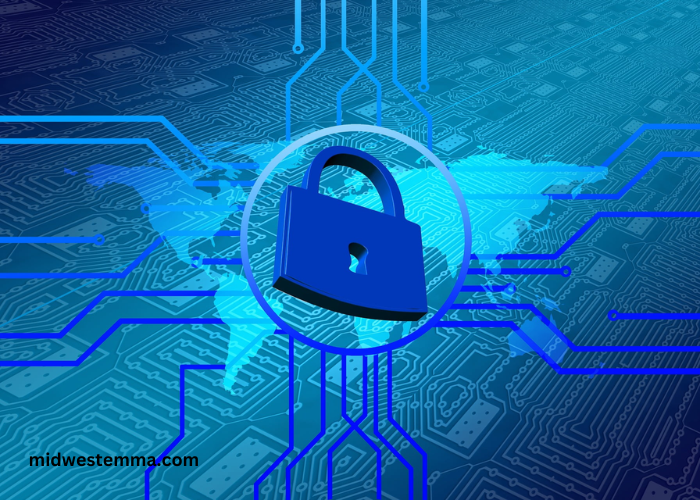Virtual Private Server (VPS) hosting has become increasingly popular in recent years due to its affordability, flexibility, and scalability. With a VPS, you can have complete control over your server environment, which is why it’s essential to ensure its security. In this article, we’ll discuss the importance of securing your VPS server, common security threats, and best practices for securing your VPS server.
Importance of Securing Your VPS Server
Securing your VPS server is crucial to protect your digital assets from unauthorized access, data theft, and other malicious activities. Hackers are constantly scanning the internet for vulnerable servers to exploit, and your VPS server could be an easy target if you don’t take adequate security measures. In addition, if your VPS server is compromised, it could lead to reputational damage, loss of revenue, and legal liabilities.So, in that case VDS server will help you.
Common Security Threats to VPS Servers
Before we dive into the best practices for securing your VPS server, it’s crucial to understand the common security threats that VPS servers face. Some of the common security threats include:
- Brute Force Attacks: Brute force attacks are one of the most common ways hackers try to gain access to your VPS server. In a brute force attack, the hacker tries multiple combinations of usernames and passwords until they find the correct one.
- Malware and Viruses: Malware and viruses can infect your VPS server through various means, such as downloading infected software or clicking on malicious links.
- DDoS Attacks: Distributed Denial of Service (DDoS) attacks can overload your VPS server with traffic, making it inaccessible to legitimate users.
- Exploits and Vulnerabilities: Exploits and vulnerabilities in software and applications running on your VPS server can be exploited by hackers to gain unauthorized access.
Best Practices for Securing Your VPS Server
Now that you understand the importance of securing your VPS server and the common security threats, let’s discuss the best practices for securing your VPS server.
Securing the Operating System of Your VPS Server
The first step in securing your VPS server is to secure the operating system. Here are some best practices for securing the operating system of your VPS server:
- Use Strong Passwords: Use strong passwords for all user accounts, including the root account. Avoid using common passwords such as “password” or “123456.”
- Disable Unused Services: Disable any services or applications that you don’t need on your VPS server to reduce the attack surface.
- Keep Your Operating System Updated: Keep your operating system updated with the latest security patches and updates to address any known vulnerabilities.
Configuring Firewall and Network Security for Your VPS Server
Firewalls and network security are essential components of your VPS server’s security. Here are some best practices for configuring firewall and network security for your VPS server:
- Use a Firewall: Use a software firewall to block unauthorized access to your VPS server. Configure the firewall to allow only necessary services and applications.
- Secure Remote Access: If you need to access your VPS server remotely, use secure protocols such as SSH. Avoid using unencrypted protocols such as Telnet.
- Use a VPN: If you need to access your VPS server over the internet, use a Virtual Private Network (VPN) to encrypt the traffic.
Protecting Against Malware and Viruses on Your VPS Server
Protecting your VPS server against malware and viruses is crucial to prevent data loss and unauthorized access. Here are some best practices for protecting against malware and viruses on your VPS server:
- Use Antivirus Software: Install and configure antivirus software on your VPS server to detect and remove any malware or viruses.
- Keep Your Software Updated: Keep all software and applications running on your VPS server updated with the latest security patches and updates.
- Use a Web Application Firewall: Use a Web Application Firewall (WAF) to protect your web applications from attacks such as SQL injection and Cross-Site Scripting (XSS).
Implementing Strong Authentication and Access Control Measures
Implementing strong authentication and access control measures is essential to prevent unauthorized access to your VPS server. Here are some best practices for implementing strong authentication and access control measures:
- Use Two-Factor Authentication: Use Two-Factor Authentication (2FA) to add an extra layer of security to your VPS server. This can include using a mobile app or a hardware token to generate a one-time code.
- Use Role-Based Access Control: Use Role-Based Access Control (RBAC) to control access to your VPS server. This ensures that users only have access to the resources they need to perform their job.
- Use Strong Encryption: Use strong encryption for sensitive data such as passwords and credit card information.
Regularly Updating and Patching Your VPS Server
Regularly updating and patching your VPS server is crucial to keep it secure. Here are some best practices for updating and patching your VPS server:
- Use Automatic Updates: Configure your VPS server to automatically install security patches and updates.
- Test Before Installing: Test updates and patches on a test environment before installing them on your production VPS server.
- Keep Your Applications Updated: Keep all applications running on your VPS server updated with the latest security patches and updates.
Monitoring and Logging for Security on Your VPS Server
Monitoring and logging are essential components of your VPS server’s security. Here are some best practices for monitoring and logging for security on your VPS server:
- Use Monitoring Tools: Use monitoring tools to detect any unusual activity on your VPS server. This can include monitoring for failed login attempts or unusual traffic patterns.
- Enable Logging: Enable logging on your VPS server to track any security-related events. This can include logging for failed login attempts, changes to system files, and network activity.
- Review Logs Regularly: Review logs regularly to identify any security-related events and take appropriate actions.
Backup and Disaster Recovery for Your VPS Server
Backup and disaster recovery are critical components of your VPS server’s security. Here are some best practices for backup and disaster recovery for your VPS server:
- Use Regular Backups: Use regular backups to ensure that you can restore your VPS server in case of a disaster.
- Test Your Backups: Test your backups regularly to ensure that they are working correctly.
- Have a Disaster Recovery Plan: Have a disaster recovery plan in place to ensure that you can quickly recover from a disaster.
Conclusion
Securing your VPS server is essential to protect your digital assets from unauthorized access, data theft, and other malicious activities. By following the best practices outlined in this article, you can significantly improve the security of your VPS server. Remember to regularly update and patch your VPS server, use strong authentication and access control measures, and implement backup and disaster recovery measures. By taking these steps, you can ensure the security of your VPS server and protect your digital assets.









